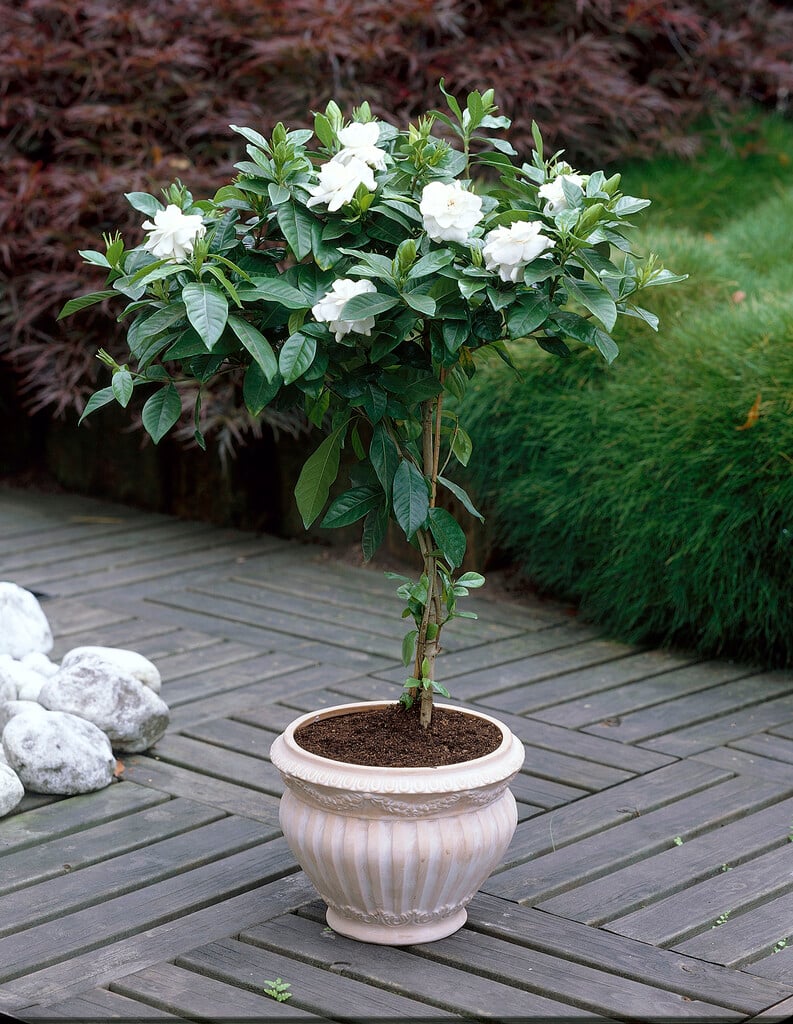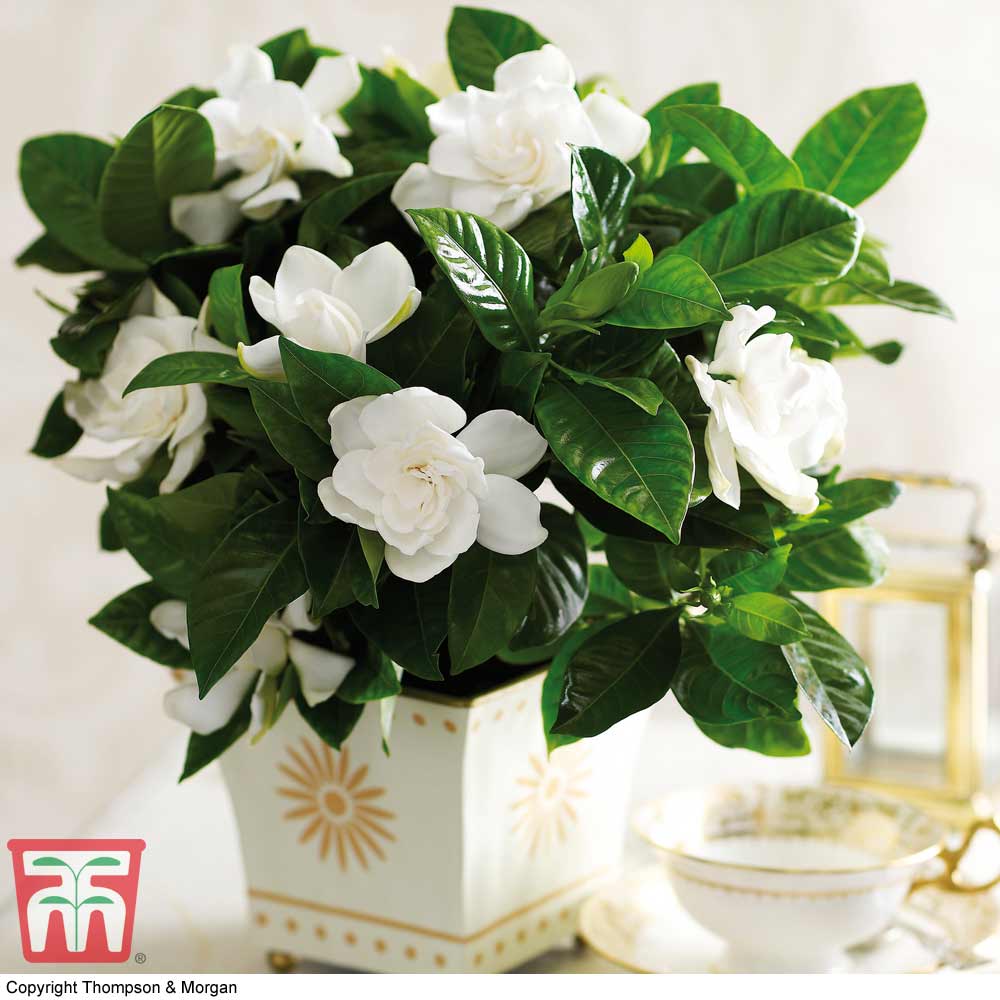“`html
The Enchanting Gardenia: A Comprehensive Guide
The Enchanting Gardenia: A Comprehensive Guide
Gardenias, with their intoxicating fragrance and elegant, creamy-white blossoms, have captivated gardeners for centuries. These exquisite plants, belonging to the Rubiaceae family, are cherished for their beauty and the powerful, sweet scent they release, particularly in the evening. However, gardenias can be notoriously finicky, requiring specific growing conditions to thrive. This comprehensive guide will delve into every aspect of gardenia cultivation, from understanding their origins to troubleshooting common problems.
Origins and Characteristics
Gardenias are native to the tropical and subtropical regions of Africa, southern Asia, Australasia, and the Pacific Islands. The genus is named after Dr. Alexander Garden, an 18th-century Scottish-born American naturalist. The most commonly cultivated species is Gardenia jasminoides, also known as Cape Jasmine, though it’s not related to true jasmines. This species is prized for its double, waxy flowers that resemble roses or camellias.

Gardenias are evergreen shrubs or small trees, typically growing to a height of 6 to 8 feet, although some varieties can reach up to 15 feet. Their leaves are glossy, dark green, and lance-shaped, providing a lush backdrop to the stunning flowers. The blooms, which can range from 2 to 4 inches in diameter, emit a powerful fragrance that can perfume an entire garden.
Varieties of Gardenia
Numerous gardenia cultivars have been developed, each with unique characteristics. Some popular varieties include:
‘August Beauty’
Known for its prolific blooming and compact growth habit, ‘August Beauty’ is a favorite among gardeners. It produces double flowers throughout the summer and into fall.
‘Mystery’

This variety boasts large, double flowers and a strong fragrance. It’s a vigorous grower and is often used for hedging.
‘Kleim’s Hardy’
As its name suggests, ‘Kleim’s Hardy’ is more tolerant of cold temperatures than other gardenia varieties. It produces single, star-shaped flowers and is suitable for cooler climates.
‘Golden Magic’
This unique variety features flowers that open white and gradually turn a golden yellow as they mature, creating a stunning visual display.
‘Crown Jewel’
A compact, spreading variety perfect for containers or ground cover, known for its cold hardiness and double blooms.
Ideal Growing Conditions
Gardenias thrive in warm, humid climates and require specific growing conditions to flourish. Here’s a breakdown of the essential factors:
Sunlight
Gardenias prefer full sun to partial shade. In hot climates, afternoon shade is beneficial to prevent leaf scorch. They need at least 4 to 6 hours of direct sunlight per day.
Soil
Well-draining, acidic soil is crucial for gardenia health. They prefer a pH range of 5.0 to 6.5. Amend alkaline soils with sulfur or peat moss to lower the pH. Rich, organic matter improves drainage and fertility.
Watering
Consistent moisture is essential, especially during the blooming period. Gardenias prefer evenly moist soil but are susceptible to root rot if overwatered. Allow the top inch of soil to dry out slightly before watering again. Use rainwater or distilled water if tap water is alkaline.
Temperature and Humidity
Gardenias prefer daytime temperatures between 65°F and 75°F (18°C to 24°C) and nighttime temperatures around 60°F (15°C). They thrive in high humidity levels, which can be achieved by misting the plants regularly or placing them near a humidifier. In dry climates, a pebble tray filled with water can help increase humidity.
Fertilizing
Gardenias are heavy feeders and benefit from regular fertilization. Use an acid-forming fertilizer specifically formulated for gardenias or azaleas. Fertilize every 4 to 6 weeks during the growing season (spring and summer), and reduce or stop fertilization in the fall and winter.
Planting and Propagation
Planting
The best time to plant gardenias is in the spring or fall. Choose a location with well-draining soil and adequate sunlight. Dig a hole twice as wide and as deep as the root ball. Amend the soil with compost or peat moss. Place the plant in the hole, ensuring the top of the root ball is level with the soil surface. Backfill the hole and water thoroughly.
Propagation
Gardenias can be propagated from stem cuttings or air layering. Stem cuttings are typically taken in the spring or summer. Select healthy, semi-hardwood cuttings and remove the lower leaves. Dip the cut end in rooting hormone and plant it in a moist potting mix. Cover the cutting with a plastic bag to maintain humidity. Air layering involves wounding a branch and wrapping it with moist sphagnum moss until roots develop.
Pruning and Maintenance
Pruning
Pruning encourages bushier growth and more abundant blooms. Prune gardenias in late winter or early spring before new growth begins. Remove dead, damaged, or crossing branches. Lightly shape the plant to maintain its desired form. Avoid heavy pruning, as it can reduce flowering.
Mulching
Apply a layer of organic mulch around the base of the plant to retain moisture, suppress weeds, and regulate soil temperature. Pine straw, shredded bark, or compost are excellent mulching materials.
Pest and Disease Control
Common Pests
Gardenias are susceptible to several pests, including:
Aphids
These small, sap-sucking insects can cause leaf curling and distortion. Spray affected plants with insecticidal soap or neem oil.
Mealybugs
These cottony insects feed on plant sap and can weaken gardenias. Remove them by hand or spray with horticultural oil.
Spider Mites
These tiny pests create webs on leaves and cause yellowing and stippling. Increase humidity and spray with miticide.
Whiteflies
These small, white insects feed on plant sap and can transmit diseases. Use yellow sticky traps or spray with insecticidal soap.
Common Diseases
Gardenias can also be affected by several diseases, including:
Powdery Mildew
This fungal disease causes a white, powdery coating on leaves. Improve air circulation and apply a fungicide.
Sooty Mold
This black, sooty fungus grows on the honeydew produced by sap-sucking insects. Control the insects to prevent sooty mold.
Root Rot
Caused by overwatering, root rot leads to wilting and yellowing of leaves. Ensure proper drainage and avoid overwatering.
Bud Drop
Bud drop is a common problem in gardenias, often caused by stress from temperature fluctuations, insufficient light, or improper watering. Maintain consistent growing conditions to prevent bud drop.
Gardenia Care Indoors
Gardenias can be grown indoors, but they require extra care to mimic their natural habitat. Here’s how to care for indoor gardenias:
Light
Place the plant in a bright, sunny window that receives at least 4 to 6 hours of direct sunlight daily. A south-facing window is ideal.
Humidity
Indoor environments are often dry, which can stress gardenias. Increase humidity by misting the plant regularly, placing it on a pebble tray filled with water, or using a humidifier.
Temperature
Maintain consistent temperatures between 65°F and 75°F (18°C to 24°C) during the day and around 60°F (15°C) at night. Avoid placing the plant near drafts or heating vents.
Watering and Fertilizing
Water the plant when the top inch of soil feels dry. Use an acid-forming fertilizer every 4 to 6 weeks during the growing season.
Gardenia in Landscaping
Gardenias are versatile plants that can be used in various landscaping applications:
Hedges and Borders
Their dense growth habit makes them ideal for creating hedges or borders.
Containers
Compact varieties thrive in containers and can be placed on patios or balconies.
Specimen Plants
Their beautiful flowers and fragrance make them excellent specimen plants.
Foundation Plantings
They can be planted near the foundation of a house to add fragrance and beauty.
The Gardenia’s Enduring Appeal
Gardenias, with their intoxicating fragrance and elegant blooms, continue to be a beloved plant among gardeners. While they can be challenging to grow, the rewards of their beauty and fragrance make the effort
